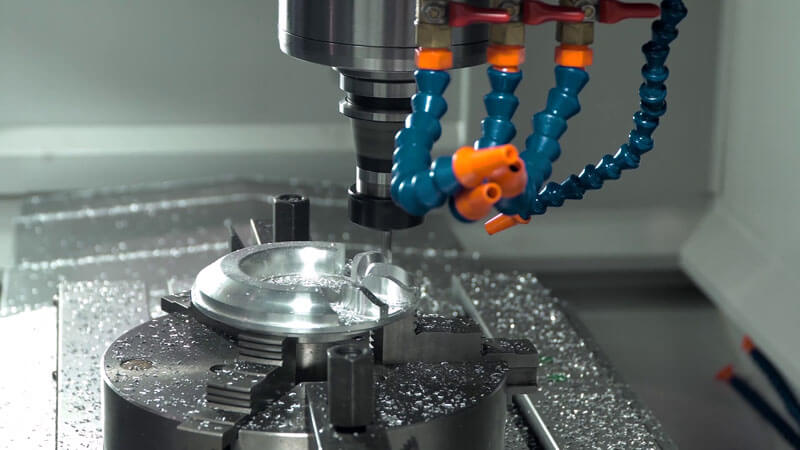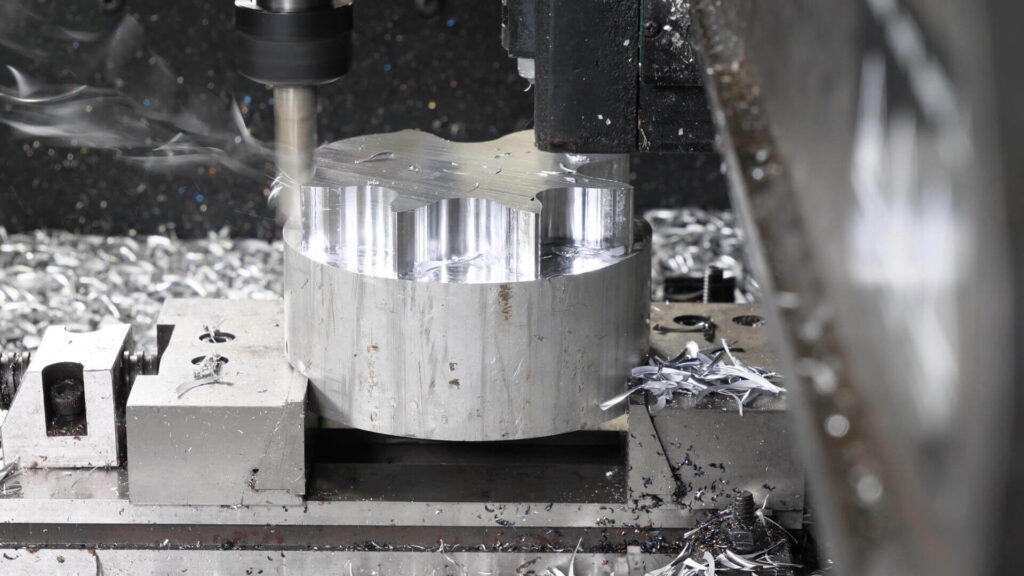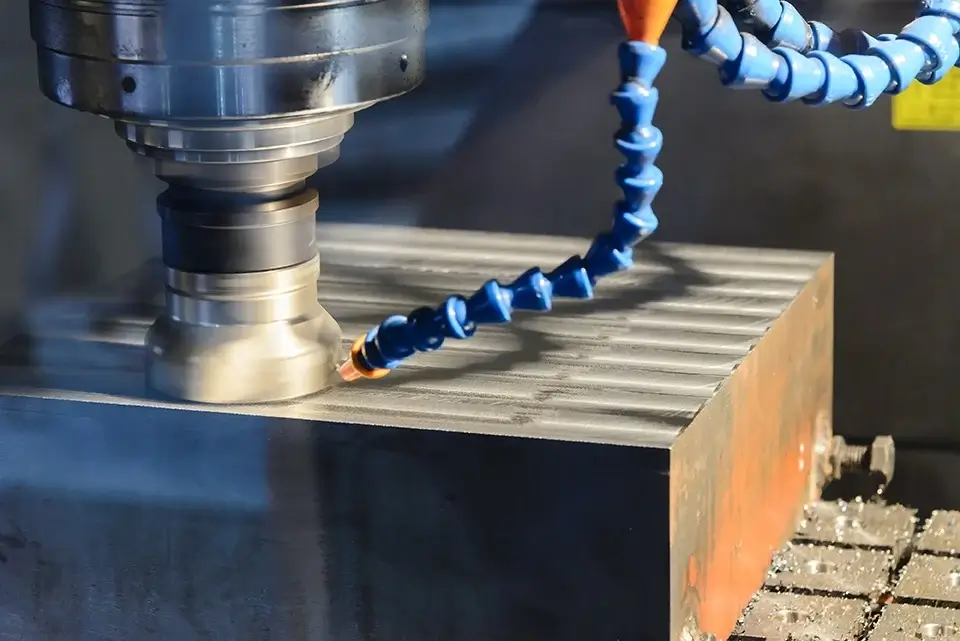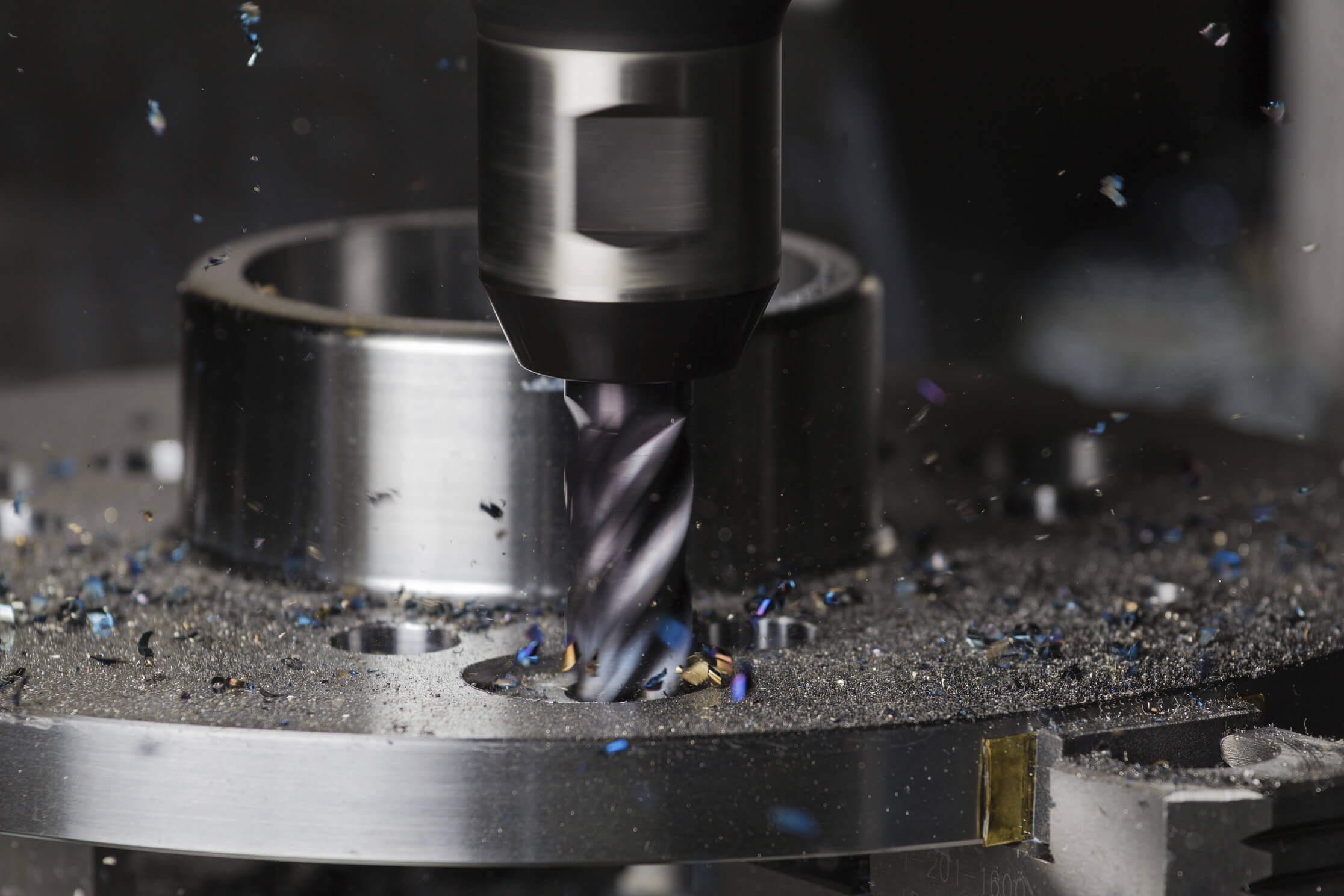Introduction to the Basics of CNC Milling
CNC (Computer Numerical Control) milling is a manufacturing technique that has played an integral role in technological advancement, enabling innovation through rapid prototyping and making products widely available through mass production. This fast, accurate, and versatile manufacturing process has gained popularity across a wide range of industries and is used to produce a wide range of products. So, what is CNC milling, how does it work, and is it the right technology for your application?
This guide comprehensively explores everything you need to know about CNC milling, from the process to how CNC milling machines work. This guide also dives into the benefits and applications of CNC milling.
1.What is CNC milling?
CNC milling is a subtractive manufacturing process in which a computer-controlled rotating cutting tool selectively removes portions of a block of material to form a desired object. Milling technology existed as a manufacturing process before the introduction of CNC (Computer Numerical Control).
In this technique, machine operators rely on part drawings to manually control the movement and orientation of the rotating cutting tool and workpiece to produce parts. This process is slow, error-prone, and requires highly skilled operators.
The integration of computers has made milling a fast, precise, and highly accurate process. Computers precisely control the speed, movement, and direction of the cutting tool and workpiece to minimize errors.
CNC milling is a subset of CNC machining, a broad manufacturing process that includes CNC turning, CNC milling, and CNC drilling. CNC machining describes the technique of carving out sections of a block of material to create parts using computer-controlled tools.

2.How does CNC milling work?
There are various types of CNC milling operations and machines. But they all follow the same operating principle. A motor-driven spindle drives a rotating cutting tool that selectively removes material from the workpiece on a table located below or next to the tool. The spindle and table move in preprogrammed directions to enable the cutting tool to reach different areas of the workpiece.
These movements are controlled by the machine’s processor based on a given set of commands and are executed by a moving mechanical feed mechanism in the milling machine.
From conceptualization to finished product, the CNC milling process generally consists of five major steps.
- Create a CAD (Computer Aided Design) model
- Convert the model from CAD to the machine
- Set up the milling machine
- Perform the CNC milling process
- Post-processing and finishing
1) CNC milling: Create a 3D model in CAD software
Designers create a replica of the object, taking into account dimensions, tolerances, and materials. An important aspect of the design phase is design for manufacturing (DFM), the process of optimizing the design of the model according to specific guidelines to ensure seamless and cost-effective manufacturing. DFM for CNC milling covers tolerances, dimensional and geometric restrictions, and functional recommendations.
2) Convert from CAD file format to machine language
CNC milling machines cannot directly read and interpret 3D models in CAD format. Professional CAM (Computer Aided Manufacturing) software programs must first convert CAD files into a programming language readable by CNC machines, namely G-code (geometry code). CAM software analyzes the imported 3D model and generates a set of corresponding commands that the CNC milling machine will follow to produce the desired object.
G-code dictates the movement, direction, speed, and feed of the cutting tool and table, controlling these parameters step by step until the object is formed. Other commands generated by the CAM software control other aspects of the CNC milling process, such as machine starting and stopping and the flow of coolant. Engineers export the G-code from CAM to the CNC machine.
3) Setting up the CNC milling machine
After importing the G-code, the operator sets up the machine for the specific CNC milling operation. The operator mounts the appropriate CNC milling tool to the spindle, securely holds the workpiece to the machine’s table, and locates the planes, axes, and directions. Next, they set up any required additional tools, fixtures, and systems, such as cooling systems.
4) Executing the CNC milling process
After setting up the machine and workpiece, the operator turns the machine on and the milling process begins. From this point on, human intervention is required only if problems arise. The CNC milling machine executes successive lines of code, cutting the workpiece step by step. Depending on the machine and milling operation, the cutting tool moves into a stationary workpiece, the workpiece moves into a stationary cutting tool, or the two move intermittently relative to each other. The cutting tool rotates at a high speed of thousands of revolutions per minute, cutting as it contacts the workpiece. These processes are repeated until the desired object is formed.
5) Post-processing
Post-processing is optional during CNC milling. However, it is often used to bring the finished product to the desired final state. The treatment may be aesthetic or functional and varies from material to material.
Post-processing options include:
- Surface treatment: deburring, polishing, sandblasting powder coating and painting.
- Coating: galvanizing (zinc), electroplating (chrome, nickel), anodizing.
- Treatment: quenching, tempering, normalizing.

3.What are the advantages of CNC milling?
The reason why this process is so popular is that it has many advantages and benefits. Some of these advantages are as follows:
- Capability: CNC milling is capable of producing a wide range of parts, shapes, features and complex geometries, from automotive engine parts to complex furniture.
- Accuracy and precision: With CNC milling, your design will be exactly as you want it. The milling machine will rarely deviate from the 3D model. Just be aware that you must optimize the model for CNC milling. In addition, the process is highly accurate and can produce parts with very low tolerances. There is also minimal potential for error, as most aspects of the process are computer controlled.
- Speed: CNC can produce complex geometries quickly. This is particularly beneficial for prototyping applications.
- Scalability: The process is suitable for both one-off prototypes and medium-sized production batches. The technology can produce multiple units uniformly.
- Material versatility: The process is suitable for a wide range of materials, including metals, glass, plastics, stone, wood, and more. If you can source a bulk material, it is likely suitable for milling.

4.CNC Milling Applications
CNC milling is a widely used manufacturing process that is used in different industries. The process primarily produces small to medium-sized 3D parts with unique or complex geometries. These parts are often components of larger assemblies, but may also be stand-alone parts for end use.
While the process can produce curves, contours, and complex geometries (like engraving), it is particularly useful in producing parametric and cubic geometries.
Due to the precision and accuracy of the process, industries such as aerospace and automotive, where part precision is critical, rely on this manufacturing method to produce engines, gears, bearings, pipes, and countless other critical parts. Another such industry is medicine and healthcare, where the process produces precision surgical instruments and complex custom devices such as orthopedic and cardiovascular implants.
The process is also widely used in the production of stand-alone objects, fixtures, and parts for industrial equipment and machinery in the manufacturing, production, construction, oil and gas, agriculture, electronics, defense, energy, and mining industries.
The uses of CNC milling extend beyond industrial applications as well. Non-industrial fields such as woodworking, jewelry making, fashion, and even crafts employ this manufacturing process to create complex and useful parts. Some examples are custom furniture, personalized gifts, tech accessories, home decor, and custom signage.
The applications of CNC milling fall into three main categories:
- Rapid Prototyping
- Custom One-Off Products
- Mass Production
1) Rapid Prototyping
Rapid prototyping is the process of quickly manufacturing a new part to test its feasibility or functionality. Manufacturers often utilize the process for rapid prototyping because it is able to quickly produce customized parts.
2) Custom One-Off Production
Many CNC milling applications fall into this category. One example is the manufacture of spare parts. If a part at an assembly plant fails during use, engineers can use the process to quickly create a replacement part without having to wait for a replacement part from the OEM. Another application is the manufacture of custom parts for a specific purpose. For example, the process can create a custom replacement hip joint for a specific patient.
Similarly, an engineer, designer, or artist can use CNC milling to create a new custom part from scratch. The same applies to existing parts.
3) Mass Production
Businesses and manufacturers can utilize CNC milling to mass produce custom or existing parts. These parts may be end-use parts or components within an assembly.
